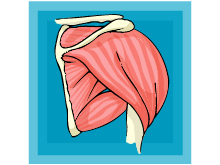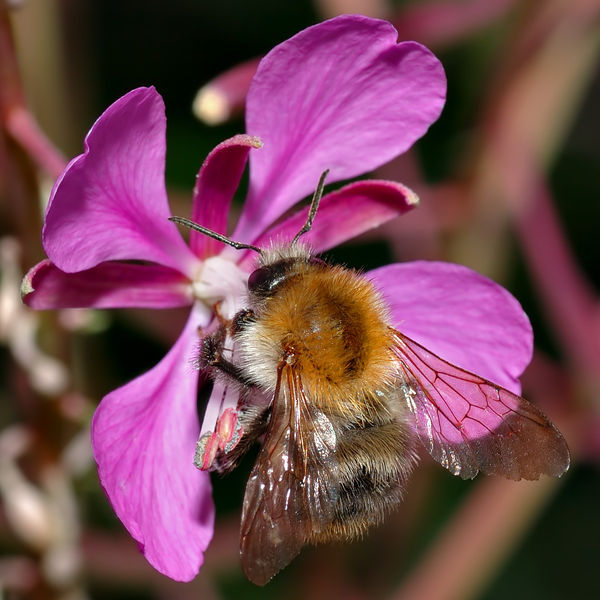What vertebrates do not have a bony skeleton? §37. Musculoskeletal system. Amphibians and reptiles
What are the functions of the musculoskeletal system?
The musculoskeletal system performs the functions of support, maintaining a certain shape, protecting organs from damage, and movement.
Why does the body need a musculoskeletal system?
The musculoskeletal system is necessary for the body to maintain vital functions. It is responsible for maintaining shape and protecting the body. The most important role of the musculoskeletal system is movement. Movement helps the body in choosing habitats, searching for food and shelter. All functions of this system are vital for living organisms.
All vertebrates have internal skeletons. Although they look very different at first glance, they share some basic characteristics. Look at the skeletons below and compare them with human skeleton. Can you recognize the skull, leg bones and spine of a pelican, frog and tiger?
So what does your skeleton do? The bones in your skeleton act as anchors for all of your muscles. The muscles work to pull the bones in different directions. Like most muscles, they work in pairs - as one extends the other contracts, allowing you to move your arm around elbow joint. Your skeleton also provides support and protection. Imagine the damage you could do to your brain if you didn't have a skull to protect it!
Questions
1. What underlies the evolutionary changes in the musculoskeletal system?
Changes in the musculoskeletal system had to fully ensure all evolutionary changes in the body. Evolution has changed the appearance of animals. In order to survive, it was necessary to search for food more actively, hide better or defend against enemies, and move faster.
Hover your mouse over the photos to see the skeleton in action. Not all animals walk and run like people do - their skeletons are adapted to various forms movements. The fish swim, their long flexible backs and strong fins allow them to glide easily through the water. Frogs' strong hind legs and large feet help them jump. Birds are flying, their “hands” have turned into wings.
Some animals, such as insects and crabs, have a completely different type of skeleton to us - their skeletons are external. They are called invertebrates because they do not have a backbone made up of vertebrae. Some other invertebrates, like jellyfish, have no skeleton at all!
2. Which animals have an exoskeleton?
The exoskeleton is characteristic of arthropods.
3. Which vertebrates do not have bone skeleton?
Lancelets and cartilaginous fish do not have a bony skeleton.
4. What does the similar structure of the skeletons of different vertebrates indicate?
The similar structure of the skeletons of different vertebrates indicates the unity of origin of living organisms and confirms the evolutionary theory.
Can you think of other animals? Do you think their skeletons changed to allow this movement? When some people think of skeletons, they think of Halloween or some mad scientist in a lab. It is what gives our bodies shape and form. Without a skeleton, we would be a pile of skin and muscle.

Bones are mainly composed of calcium and other minerals. They are hard enough to support our weight and daily stress. Bones protect our major organs and give shape to our bodies. Bones are actually living tissue. Center of the bone or Bone marrow- this is the place where your blood is created.
5. What conclusion can be drawn after getting acquainted with general functions musculoskeletal system in all animal organisms?
The musculoskeletal system in all animal organisms performs three main functions - supporting, protective, and motor.
6. What changes in the structure of protozoa led to an increase in the speed of their movement?
Children's bones actually grow and change. Human body has 206 bones that make up the skeleton. Six of them are tiny bones discovered in inner ear, three in each ear. 
Our bones cannot move on their own. They need to pull something to be useful. Attached to the bones of the bone are fibrous tissues known as tendons. They are slightly elastic and are white or gray in color.
Tendons connect bones to muscles. Muscles contract and relax as needed to help our bones - arms, legs, head, legs, etc. they support - they move. Tendons do not have blood vessels, so it takes a long time to heal if they are damaged.
The first supporting structure of animals is cell membrane allowed the body to increase the speed of movement due to flagella and cilia (outgrowths on the shell)
Tasks
Prove that the complication of the amphibian skeleton is associated with changes in the habitat.
The skeleton of amphibians, like other vertebrates, consists of the following departments: skeleton of the head, torso, limb girdles and free limbs. Amphibians have significantly fewer bones than fish: many bones are fused, and in some places cartilage is preserved. The skeleton is lighter than that of fish, which is important for terrestrial existence. Wide flat skull And upper jaws represent a single entity. Very mobile lower jaw. The skull is movably articulated to the spine, which plays important role during terrestrial food production. The spine of amphibians has more sections than that of fish. It consists of the cervical (one vertebra), trunk (seven vertebrae), sacral (one vertebra) and caudal sections. The tail of a frog consists of a single tail bone, while that of tailed amphibians consists of separate vertebrae. The skeleton of the free limbs of amphibians, unlike fish, is complex. The skeleton of the forelimb consists of the shoulder, forearm, wrist, metacarpus and phalanges of the fingers; hind limb - thigh, tibia, tarsus, metatarsus and phalanges. The complex structure of the limbs allows amphibians to move in both aquatic and terrestrial environments.

Between some of our bones we have joints that allow the body to bend, like our elbows and knees. These special joints between bones are covered with a plastic material that protects the ends of the bones from friction. This material is called cartilage. Cartilage also makes up our outer ear and the end of our nose.

Protecting our brain is a bone known as the skull. The skull is a special set of bones and plates that, when we are born, are separated by cartilage, but as we grow, the cartilage dissolves and is replaced by the growing cranial bone. Without this unique system, the bones of the skull will collide with each other as they grow.
Which representatives of the fauna have a skeleton on the outside?
Phylum Arthropod the most numerous, numbering about 1 million species. Being the pinnacle of the evolution of invertebrate animals, arthropods have gone through a long development path: the first of them lived in the seas of the Cambrian period. They came to land in the Silurian period. The first land animals that could breathe atmospheric air, were arachnids. The further evolution of terrestrial arthropods consisted of improvement exoskeleton and organs of movement.The type includes: insects, crustaceans, arachnids.
Crustaceans. In aquatic animals, the head and abdominal sections merge to form the cephalothorax; the chitinous skeleton is strong, thick, and impregnated with calcium salts. The body of crustaceans begins with the head jaw and ends with the anal lobe. Each body segment bears a pair of limbs. The growth of cancer, like all arthropods, occurs due to molting. In this case, the single-layer integumentary epithelium secretes enzymes that peel off the chitinous cuticle. After this, the cancer crawls out of the skeleton. After being released from the old skeleton, the cancer cells begin to divide rapidly and within a few hours the cancer doubles in size. Then the epithelial covers secrete chitin, which hardens when interacting with water, a new one is formed the exoskeleton protects it but limits its growth.

The animals known as vertebrates make up the animals we call mammals, fish, birds, reptiles and amphibians. Each of these animals has a backbone and a skeleton. Birds have bones that are hollow - this makes their bones easier to fly.

While vertebrates all have skeletons to give shape and support to their bodies, invertebrates do not have bones. Many invertebrates have either a hard outer shell because their skin acts like bones. Insects, crabs, lobsters and shrimp are some of the creatures with exoskeletons. Other invertebrates are soft, like octopuses, squids or earthworms.
 |
Arachnids. Almost all are arachnoid forms. The head and abdomen merge to form the cephalothorax. Latest segments thoracic form a sharp transition to the abdominal region. The abdominal segments are poorly visible, the border is slightly pronounced. There are no antennae, the oral apparatus is of a sucking type. On the cephalothorax, 4 pairs of walking legs are formed. Integument: In arachnids, they bear a relatively thin chitinous cuticle, under which lies the hypodermis and basement membrane. The cuticle protects the body from loss of moisture through evaporation, which is why arachnids inhabited the driest areas of the globe. The strength of the cuticle is given by proteins encrusting chitin.
A popular science fiction trope is a world ruled by creatures with unusual body plans. From the octadoid Martians of the War of the Worlds to the giant "bugs" of the Starship Troopers, there's an eerie appeal to what a race of spineless creatures might represent real threat for humanity.
Because as far as we know, the backbone is king. Whether we are the true "dominant" organisms on Earth is debatable. But we are vertebrates - and most of them are large, charismatic animals that walk, swim and fly.
 |
Insects. A class of invertebrate six-legged arthropods that has the greatest diversity among all other animals on Earth and includes, for example, butterflies, beetles, flies, ants, bees, etc. About 1 million species of insects are known. Body dimensions are 0.2 - 330 mm (among modern representatives), usually within the range of 1 - 50 mm. Covering body The cuticle is part of the skin, forming a tough outer shell, or exoskeleton, but in some cases it is soft and thin. The outer cuticle is divided into separate shields - sclerites, and due to its density is favorable for the development of various formations on it - depressions, grooves, tubercles, ribs, small hairs - chaetoids, etc. Movable skin hairs - chaetae, having sometimes the character of bristles or scales.
The spine is certainly a useful innovation. It provides body support as well as valuable protection spinal cord. The fact that our bodies are supported by an internal skeleton rather than an external one also allows for a greater range of motion and means that vertebrates can grow to much larger sizes than any invertebrate ever could.
These creatures were among the first vertebrates. Their bodies were supported by vestigial vertebrae and a rigid rod called a notochord, made of a cartilaginous material. The notocord was the precursor to the spine, a structure found in vertebrates from mice to dinosaurs to humans.
 |

